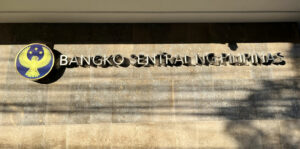By Luisa Maria Jacinta C. Jocson, Reporter
THE BANGKO SENTRAL ng Pilipinas (BSP) will likely begin its policy easing cycle with a 25-basis-point (bp) cut in June, Bank of America (BofA) Global Research said.
In a report dated March 4, it said the BSP is expected to slash policy rates by a total of 100 bps this year, starting with a 25-bp cut in the second quarter. This would be followed by a reduction of 50 bps in the third quarter and 25 bps in the fourth quarter.
BofA Global Research said the first policy cut will be delivered in June as this would be “in sync with the Fed.”
“The Bank Indonesia (BI) and BSP are more sensitive to capital flows and foreign exchange movements, and should follow the Fed’s gradual easing cycle closely, facilitated by high real policy rates in both,” it added.
The Monetary Board has kept its benchmark rate steady at a near 17-year high of 6.5% for a third straight meeting in February.
From May 2022 to October, the BSP raised borrowing costs by 450 bps, making it among the most aggressive central banks in the region.
The Monetary Board is set to hold its next policy meeting on April 4.
BSP Governor Eli M. Remolona, Jr. in January said a rate cut in the first semester could be “too soon,” adding that the central bank remains hawkish despite easing inflation.
Markets are widely anticipating the US Federal Reserve to begin easing rates by midyear. The Fed raised its policy rate by 525 bps to 5.25-5.5% from March 2022 to July 2023.
Meanwhile, BofA Global Research said it expects Philippine inflation to stay “well within or below target” this year.
Inflation likely picked up to 3% in February, according to a BusinessWorld poll of 16 analysts. This would be slightly faster than the 2.8% print in January and mark the third straight month that inflation was within the 2-4% target range.
This would also be the first time since September 2023 that inflation picked up on a month-on-month basis.
The Philippine Statistics Authority (PSA) is scheduled to release February inflation data today (March 5).
ING Bank N.V. Manila Senior Economist Nicholas Antonio T. Mapa said the recent downgrade in the BSP’s risk-adjusted forecasts is a signal for room to begin policy easing.
“We note that even in the worst-case scenario, inflation is still tipped to slide within target, which would likely suggest that the BSP may not have needed that ‘insurance’ rate hike late last year,” he said in an e-mail.
“As such, it also points to a BSP having much space to reduce policy rates with real policy rates now at more than 3%,” he added.
The BSP lowered its risk-adjusted inflation forecast for this year to 3.9% from 4.2% at its February meeting, falling within its 2-4% target.
Union Bank of the Philippines, Inc. Chief Economist Ruben Carlo O. Asuncion said the decision to cut rates would depend on core inflation.
“While core consumer price index would not be spared the base effects, our monthly trajectory yielded a steady core path in the upper half (3-4%) of the BSP’s inflation target range. This year’s core average would ease to 3.5% from 6.6% in 2023,” he said in an e-mail.
“We reiterate the likelihood of core inflation (and its components) as less susceptible to the risk of high food price shocks from El Niño,” he added.
Mr. Asuncion also noted their “benign” core inflation projection was due to the expectation of below 6% gross domestic product (GDP) growth this year amid less robust domestic demand.
In January, core inflation, which excludes volatile prices of food and fuel, slowed to 3.8% from 4.4% in December. This was the first time that core inflation settled within the target after 17 months.
